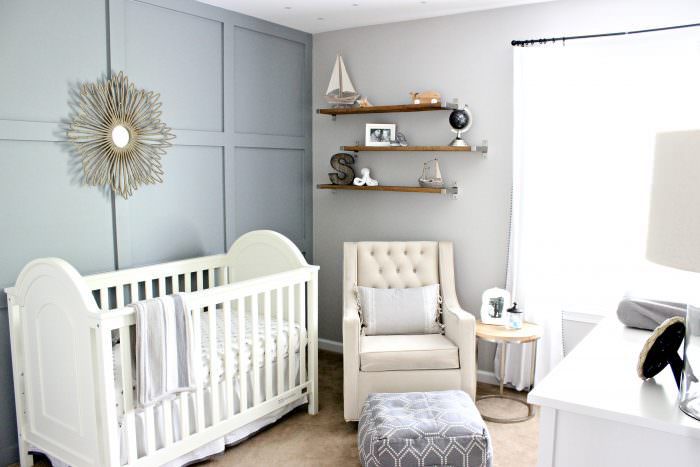Building a home is a dream for many, and when you’re expecting a new addition to the family, that dream takes on a new dimension. Kit homes, with their affordability and customisation options, have become an increasingly popular choice for growing families in Australia. Designing a nursery within a kit home can be both exciting and challenging. Here’s how you can create a safe, cosy, and welcoming nursery in your kit home.
Planning the Space
Before diving into the specifics of design and decor, it’s essential to plan the space effectively. Consider the following factors:
Location: Choose a room that is close to your bedroom for easy access during the night. Ensure that the room has good ventilation and natural light.
Size: Make sure the room is spacious enough to accommodate all the essential nursery furniture, including a crib, changing table, and storage units. However, it shouldn’t be so large that it becomes difficult to maintain a comfortable temperature.
Safety: Ensure the room is free from hazards. Check for sharp corners, loose wires, and ensure that all electrical outlets are covered. If the room has windows, install safety latches and consider blackout curtains for better sleep.
Designing the Nursery
Once you have planned the space, it’s time to focus on the design. The goal is to create a nurturing environment that promotes both safety and comfort.
Colour Scheme: Choose calming colours such as soft pastels or neutral tones. These colours create a soothing atmosphere that can help your baby sleep better. Avoid bright, stimulating colours that might make it harder for your baby to relax.
Furniture: Invest in quality nursery furniture that adheres to safety standards. Key pieces include:
- Crib: The crib should have a firm mattress that fits snugly with no gaps. Ensure the crib rails are close enough to prevent your baby from slipping through.
- Changing Table: A sturdy changing table with guardrails and storage for diapers and other essentials will make diaper changes more convenient.
- Rocking Chair: A comfortable rocking chair or glider can be a lifesaver during those late-night feedings and soothing sessions.
Storage Solutions: Babies come with a lot of stuff. Incorporate plenty of storage solutions to keep the room organised. Shelves, baskets, and dressers can help keep toys, clothes, and other items in their place.
Flooring: Choose soft, easy-to-clean flooring options. Plush carpets or large rugs can provide a soft surface for tummy time and crawling, but they should be easy to clean to maintain hygiene.
Safety Considerations
Safety is paramount when setting up a nursery. Here are some key safety tips:
Crib Safety: Ensure the crib meets current safety standards. The mattress should be firm, and there should be no gaps between the mattress and the crib walls. Avoid using blankets, pillows, or stuffed animals in the crib as they pose a suffocation risk.
Electrical Safety: Cover all electrical outlets and keep cords out of reach. Use cordless window coverings to prevent strangulation hazards.
Furniture Anchoring: Anchor all heavy furniture, such as dressers and bookshelves, to the wall to prevent tipping accidents.
Temperature Control: Maintain a comfortable room temperature. Install a ceiling fan or use a portable fan to ensure good air circulation. Avoid placing the crib near windows, radiators, or vents to protect your baby from drafts and temperature fluctuations.

Creating a Cosy Atmosphere
A nursery should be a place where your baby feels safe and secure. Creating a cosy atmosphere involves both physical comfort and emotional warmth.
Lighting: Use soft, warm lighting to create a calming environment. Consider a dimmable lamp for late-night feedings. Nightlights can also provide gentle illumination without disturbing your baby’s sleep.
Bedding: Use soft, breathable bedding made from natural materials like cotton. Opt for fitted sheets and avoid using loose bedding that can pose a safety hazard.
Decor: Decorate the room with baby-safe items. Wall decals, mobiles, and soft toys can add a touch of whimsy without compromising safety. Choose decor items that are easy to clean and maintain.
Personal Touches: Incorporate personal touches that reflect your family’s style. Handmade quilts, family photos, and heirloom items can add a sense of warmth and connection.
Practical Tips for New Parents
Setting up a nursery in a kit home in Australia comes with its own set of challenges and rewards. Here are some practical tips to help you along the way:
Flexible Design: Design the nursery in a way that it can grow with your child. Choose furniture and decor that can be easily updated as your baby grows into a toddler and beyond.
Functional Layout: Keep functionality in mind when arranging the furniture. Ensure there’s enough space to move around comfortably and that all essential items are within easy reach.
Budgeting: Create a budget and stick to it. While it’s tempting to splurge on the cutest items, focus on essentials and invest in quality pieces that will last.
Maintenance: Choose materials and finishes that are easy to clean and maintain. Babies can be messy, so it’s essential to have surfaces that can be wiped down quickly.
Eco-Friendly Choices: Consider using eco-friendly materials and products. Organic bedding, low-VOC paints, and sustainably sourced furniture can create a healthier environment for your baby.
Summary
Creating a safe and cosy nursery in your kit home is an exciting project that allows you to blend practicality with creativity. By focusing on safety, comfort, and personal touches, you can design a nurturing space where your baby can thrive. With careful planning and thoughtful design, your nursery will become a haven of warmth and love, setting the stage for many cherished memories in your kit home in Australia.

